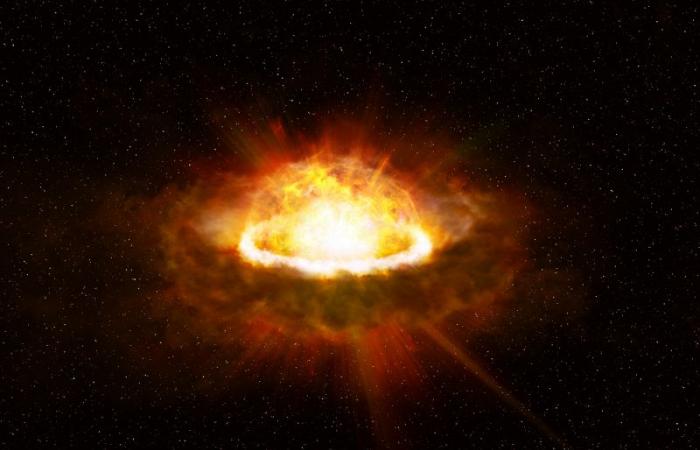How effective are ozone and the magnetosphere at protecting us from powerful supernova explosions?
Earth’s atmosphere has protected life for billions of years, creating a refuge in which evolution has produced complex life forms such as man. The ozone layer plays a fundamental role in protecting the biosphere from radiation from the Sun (it blocks 99% of UV rays). The Earth’s magnetosphere also protects us. But how effective are ozone and the magnetosphere in protecting us from powerful supernova explosions?
The new study
Every million years – a small fraction of Earth’s 4.5 billion year lifetime – a massive star explodes within 100 parsecs (326 light years) of us. We know this because our Solar System is inside a huge bubble in space called Local Bubble. It is a region where the density of hydrogen is much lower than outside the bubble. A series of supernova explosions that occurred in the previous 10-20 million years literally “hollowed out” the bubble.
The risks of supernovae
Supernovae are dangerous and the closer a planet is, the more catastrophic the effects are. Scientists have studied the consequences that supernova explosions have had on Earth, wondering whether they triggered mass extinctions or even partial extinctions. A supernova’s gamma-ray burst and cosmic rays can deplete Earth’s ozone and allow UV radiation to reach the surface. The effects can also create aerosol particles in the atmosphere, increasing cloud cover and causing global cooling.
What should we expect
The local bubble is not the only evidence of supernovae collapsing nearby in the past few million years. Ocean sediments contain evidence of 60 Fe, a radioactive isotope of iron with a half-life of 2.6 million years. SNe eject 60 Fe into space when they explode: this shows that a nearby supernova exploded about 2 million years ago. There is also 60 Fe in the sediments indicating another SN explosion about 8 million years ago.
Mass extinctions on Earth
Researchers have correlated a supernova explosion with the Late Devonian extinction that occurred about 370 million years ago. In one paper, researchers found plant spores burned by UV light, evidence that something powerful has depleted the Earth’s ozone layer. In fact, Earth’s biodiversity has declined for approx 300,000 years before the Late Devonian extinction, suggesting that multiple supernovae may have played a role.
Source






